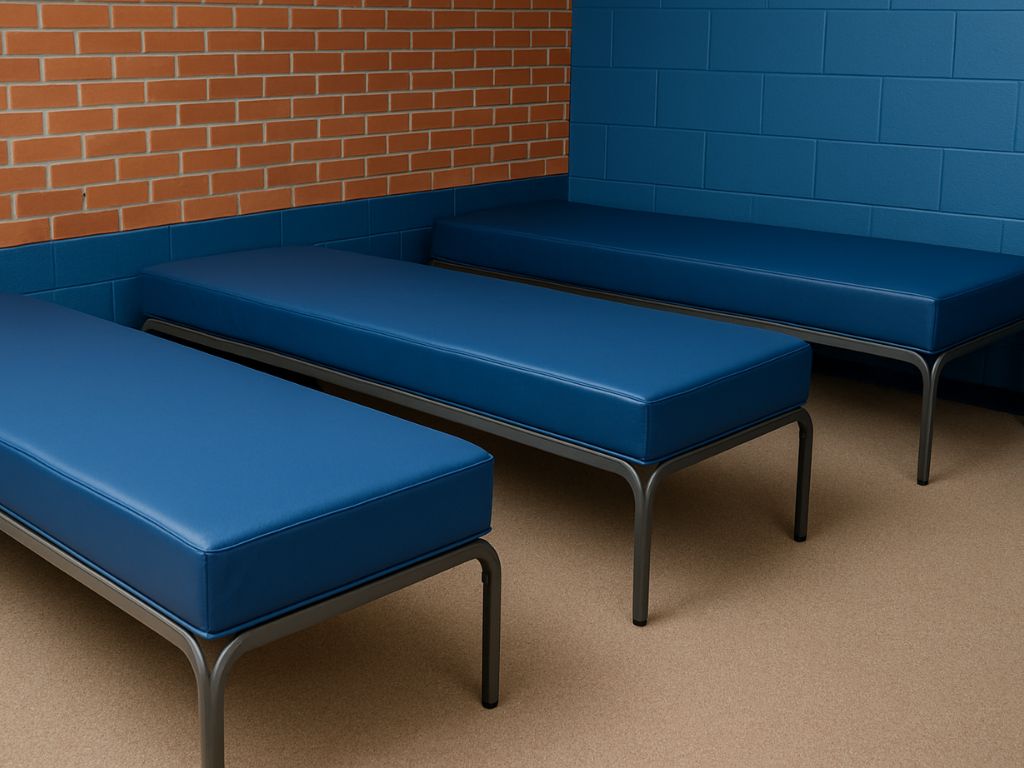Let me tell you a quick story.
A few years ago, I volunteered at a local emergency shelter after a major storm swept through our town. One of the things that stuck with me, besides the resilience of people, was how important a decent mattress was in those moments.
The cots were basic, but the vinyl-covered mattresses? Absolute lifesavers. Durable, easy to clean, and surprisingly comfortable for something designed to be so utilitarian.
That experience stuck with me, and ever since, I’ve been more tuned in to what really makes a vinyl-covered mattress worth investing in—whether it’s for emergency shelters, hospitals, industrial bunk setups, or even for your own garage guest space.
If you’re shopping for one, or just curious, let’s break down what separates a high-quality vinyl-covered mattress from the ones that crack, sag, or smell funky after just a few months.
1. Durability: The Backbone of a Good Vinyl Mattress
A top-tier vinyl-covered mattress doesn’t feel like it’s made for short-term use. The best ones hold up under pressure—literally.
Whether it’s a rotating group of campers, patients in a hospital, or folks in a temporary shelter, these mattresses should be able to take a beating.
Look for:
- Heavy-duty vinyl, at least 11–13 gauge thickness.
- Reinforced seams to avoid peeling or splitting.
- Tear and puncture resistance.
The DuraRest Vinyl Foam Mattress is a great example. It’s not flashy, but it’s built like a tank. The kind of mattress you forget about—because it just works.
2. Waterproof and Easy to Clean? Non-Negotiable.
One of the biggest perks of vinyl-covered mattresses is how effortlessly clean they are. Spills? Wipe them. Bodily fluids in a clinical setting? Disinfect in seconds.
That said, not all vinyl is created equal. Some materials react poorly to disinfectants and start to break down over time. Others trap odors. You want:
- Non-porous vinyl that resists moisture absorption.
- Surfaces that can handle bleach-based or hospital-grade cleaners.
- No seams or zippers in sleeping surfaces where bacteria can hide.
Trust me, if you’ve ever cleaned up after a sick toddler—or a rough night at a shelter—you’ll appreciate the easy-sanitization factor more than you can imagine.
3. Foam Density: Comfort Meets Support
Okay, so we know vinyl’s all about being practical. But what about comfort?
Here’s a little secret: even in high-traffic environments, people still want a good night’s sleep. So, don’t overlook what’s on the inside. A high-quality vinyl-covered mattress should have:
- High-density foam (1.8 lbs/ft³ or more) to resist flattening over time.
- At least 4 inches of supportive cushioning.
- A design that distributes body weight evenly, reducing pressure points.
I’ve slept on one during a camping trip gone sideways—our air mattress popped on night one. The vinyl mattress we borrowed from the site manager? Firm, but surprisingly forgiving. My back wasn’t mad the next day.
4. Multi-Use Design: Flexibility Matters
These aren’t just for hospital beds. The best vinyl mattresses are multi-purpose beasts.
They’re ideal for:
- Shelters and rescue missions (where turnover is high).
- Campgrounds or scout camps (where mattresses see year-round use).
- Industrial settings (like oil rigs or worksite bunkhouses).
- Medical recovery rooms (for both home and facility-based care).
If you’re buying for an organization, consider mattresses that stack well for storage and transport. Rounded corners help with maneuverability, and lighter foam cores can reduce strain on staff moving them.
5. Fire Retardant Compliance: Safety First
Safety might not be the first thing on your mind, but it should be. In commercial or medical settings, flame resistance is often a legal requirement.
Check that the mattress meets or exceeds:
- CAL 117 flammability standards.
- 16 CFR Part 1633 for open-flame testing (if applicable).
- Any local or institutional guidelines for fire safety in sleep products?
The last thing you want in a high-risk environment is flammable bedding. A well-made vinyl-covered mattress will advertise its compliance right up front, because it matters.
6. No Weird Smells, Please
Let’s be real—some vinyl mattresses have that “new tire” odor that never quite goes away. A good one, though? It might have a faint scent out of the box, but that fades quickly. Look for:
- Low-VOC manufacturing processes.
- Certifications that verify non-toxic materials.
- User reviews mentioning “odor-free” or “clears up quickly.”
You don’t want anyone, especially in hospital or rescue situations, dealing with an overpowering chemical smell while trying to rest.
7. User Reviews: A Goldmine of Honest Feedback
Before hitting “Add to Cart,” take five minutes and read reviews. Seriously.
You’ll find out:
- Whether the mattress really holds up after a year.
- If it’s comfortable enough for overnight stays.
- How well it resists wear and tear in real-world use.
The beauty of today’s buying experience is this: someone out there has already tested it for you—on a cot in a shelter, in a hospital room, or on a camp bed in the Rockies.
Final Thoughts: It’s All About Practical Comfort
Choosing a vinyl-covered mattress isn’t about luxury—it’s about practical comfort, durability, and peace of mind. Whether you’re furnishing a remote job site, building out shelter beds, or just need a waterproof solution for a messy phase of parenting, the right mattress makes a world of difference.
Personally? I’ll always remember that shelter shift and the quiet gratitude of folks who just needed a dry, clean, firm place to rest. And honestly, that’s what the best vinyl mattresses offer—a no-fuss, comfortable place to lay your head.
Ready to find one that fits your needs?
Check out CampMattressesToGo’s DuraRest Vinyl Foam Mattress—it ticks all the right boxes, and then some.

